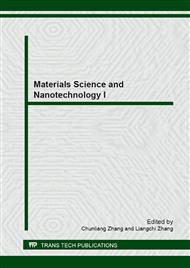p.272
p.276
p.280
p.284
p.290
p.295
p.299
p.303
p.307
Effects of Sand Blasting on the TBCs Fabrication Quality
Abstract:
CoCrAlY bond coat(BC) and top ceramic coating(TCC) were fabricated on the GH99 super alloy by air plasma spray(APS), before TCC fabrication, BC was treated by sand blasting with different blasting parameters (blasting pressure, blasting speed). The roughness Ra of BC surface was obtained by orthogonal experiment design. Then, cross section morphology of TCC/BC interface were investigated by scanning electron micrograph(SEM), meanwhile TCC/BC interface stresses were analyzed based upon ABAQUS software using finite element method (FEM). The results show that, the roughness of bond coat surface increase first with increasing blasting pressure and speed, then decrease finally becomes stable. Both maximum tensile stress and compressive stress appear in TCC/BC interface area which is bigger in BC layer than that in TCC layer; With the increase of amplitude of interface triangle, the TCC/BC interface stress increase first then decrease until 7μm amplitude, then there appears a decrease of the interface stress.
Info:
Periodical:
Pages:
290-294
Citation:
Online since:
December 2012
Price:
Сopyright:
© 2013 Trans Tech Publications Ltd. All Rights Reserved
Share:
Citation:


